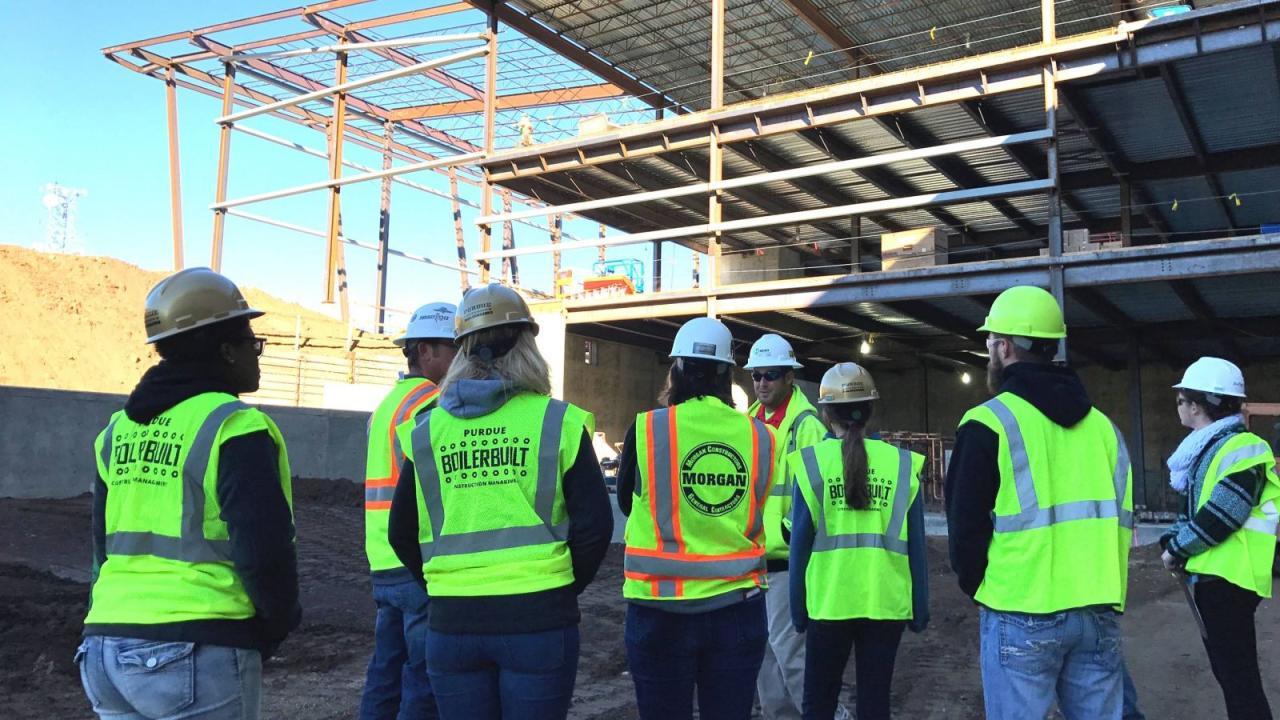Beginning this fall semester, Purdue Polytechnic faculty leads Bryan Hubbard and Kyubyung Kang are offering a new degree concentration for students in the School of Construction Management Technology. This concentration, called Infrastructure Construction Management, provides students with study- and work-based opportunities to understand construction in transportation and industrial systems.
“This is designed to go into an area of construction we haven’t previously explored as much,” Hubbard (a construction management professor and recent Murphy Award winner for teaching excellence) said. “The industries we’re going to teach about use a lot of specialized equipment and advanced mechanical, electrical, and piping systems that use different construction processes than typical commercial construction. So that, combined with the transportation construction which is new for us, mean that this is pretty unique curriculum.”
Kang, who has worked alongside the Indiana Department of Transportation in faculty roles both at Purdue and IUPUI, will spearhead the transport portion of the curriculum in the spring, while Hubbard heads the teaching about industrial facilities this fall.
“Industries in midwestern states are pretty reliant on transport lines to get resources to their facilities, and also to export them out,” Kang said. “So there are whole systems in transport that we can teach students about. We’ll teach them about pavement systems in asphalt and concrete, bridge construction, tunnels, and we’re also bringing in our colleague Dr. Shanyue Guan to teach about railway systems.”
“Just because of what we normally teach, we’re very building-focused,” Hubbard added. “That means we talk about a lot of residential construction and commercial construction like houses, schools and commercial businesses. Sometimes that’s called ‘vertical construction.’ This concentration is about industrial facilities and related transportation in road, bridge and rail, which are more ‘horizontal construction.’”
The most relevant industries to this discipline are powerplants, wastewater systems and advanced manufacturing, wherein Hubbard specifically names “pharmaceutical companies and chip manufacturers.”
Hubbard and Kang have identified a range of industry partners to help develop the learning outcomes and identify important instructional course modules, and they will continue to work toward adding even more. As it stands, the partners stand along either the industrial portion of the concentration, or the transportation portion.
For the industrial curriculum, the following partners have provided support:
- Bowen Engineering
- Fluor
- Kiewit
And for the transportation curriculum:
- Indiana Constructors Inc.
- Asphalt Pavement Association of Indiana
- Walsh Construction
The best point of entry for industry partners looking to collaborate with the School of Construction Management Technology is its advisory board, the Construction Advisory Council (CAC).
“Our Indiana construction contractors are excited about this,” Hubbard stated. He emphasized that several industry partners have already begun hiring students who are planning on taking the new concentration.
“Fluor is building a new plant in Lebanon. And in our current setup, [construction] students can go work on-site every Friday. Some of our students have been picked by Fluor, so they get up early and go to Lebanon to work on it and help get it constructed. Once this concentration is really spun up, they’re looking to take an even larger number of the students who’ve had some experience in these courses.”
Kang also stated the importance of addressing a potential “gap” in industry-focused construction. “You know, this will be the fifth option for a degree concentration,” he said. “We have these focuses on residential and commercial construction, and on mechanical or electrical projects as well as healthcare facilities. But we want to look at industrial facilities too, which means teaching students not only how to build them, but by treat the surrounding transport lines as an integrated part of the whole, rather than a separate system.”
For interested students, they may contact Hubbard or Kang to learn more.
Additional information


